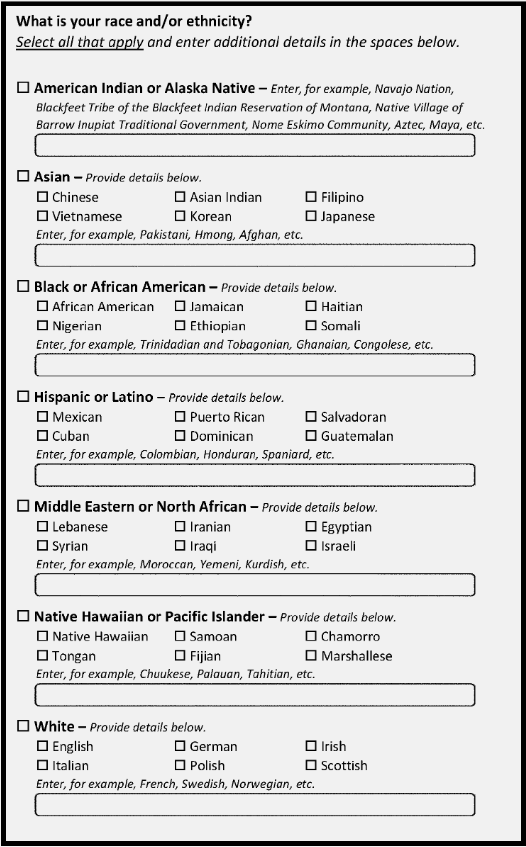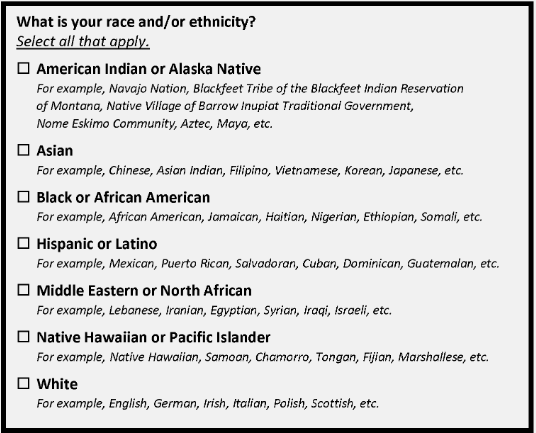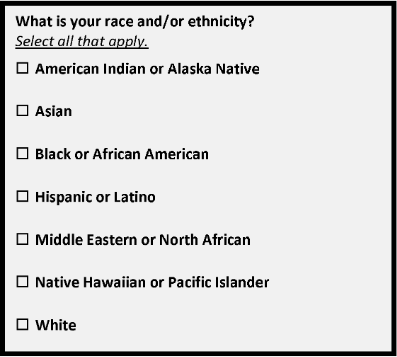Information contained in this publication is intended for informational purposes only and does not constitute legal advice or opinion, nor is it a substitute for the professional judgment of an attorney.
On March 29, 2024, the Office of Management and Budget (OMB) published revisions to Statistical Policy Directive No. 15: Standards for Maintaining, Collecting, and Presenting Federal Data on Race and Ethnicity (SPD 15). These changes will impact how companies collect the race and ethnicity data for their federal reporting.
SPD 15 was initially developed in 1977 and does not require any agency or program to collect race and ethnicity data; rather, SPD 15 provides common language for uniformity and comparability in the collection and use of race and ethnicity data by federal agencies (e.g., EEO-1 reports). SPD 15 had previously been revised, resulting in the 1997 SPD 15.
In January 2023, the OMB proposed updating SPD 15, citing “large societal, political, economic, and demographic shifts in the United States” during the past 25 years, including “increasing racial and ethnic diversity; a growing number of people who identify as more than one race or ethnicity; and changing immigration and migration patterns.”
The 2024 SPD 15 replaces and supersedes 1997 SPD 15 and is based on the recommendations from the Interagency Technical Working Group on Race and Ethnicity Standards (Working Group). The Working Group initially convened in June 2022 and consisted of federal government career staff from 35 agencies. Over the past 21 months, the Working Group received over 20,000 comments in response to its proposed revisions in January 2023, held 94 listening sessions, and hosted 3 public virtual townhalls. The key revisions to SPD 15 include a new race/ethnicity category and a one question format combining the race and ethnicity question into “What is your race and/or ethnicity? Select all that apply and enter additional details in the spaces below.”
With the addition of the -new Middle Eastern/North African category, there will be seven race and/or ethnicity categories:
- American Indian or Alaska Native. Individuals with origins in any of the original peoples of North, Central, and South America, including, for example, Navajo Nation, Blackfeet Tribe of the Blackfeet Indian Reservation of Montana, Native Village of Barrow Inupiat Traditional Government, Nome Eskimo Community, Aztec, and Maya.
- Asian. Individuals with origins in any of the original peoples of Central or East Asia, Southeast Asia, or South Asia, including, for example, Chinese, Asian Indian, Filipino, Vietnamese, Korean, and Japanese.
- Black or African American. Individuals with origins in any of the Black racial groups of Africa, including, for example, African American, Jamaican, Haitian, Nigerian, Ethiopian, and Somali.
- Hispanic or Latino. Includes individuals of Mexican, Puerto Rican, Salvadoran, Cuban, Dominican, Guatemalan, and other Central or South American or Spanish culture or origin.
- Middle Eastern or North African. Individuals with origins in any of the original peoples of the Middle East or North Africa, including, for example, Lebanese, Iranian, Egyptian, Syrian, Iraqi, and Israeli.
- Native Hawaiian or Pacific Islander. Individuals with origins in any of the original peoples of Hawaii, Guam, Samoa, or other Pacific Islands, including, for example, Native Hawaiian, Samoan, Chamorro, Tongan, Fijian, and Marshallese.
- White. Individuals with origins in any of the original peoples of Europe, including, for example, English, German, Irish, Italian, Polish, and Scottish.
Collection of detailed data beyond the minimum required race and ethnicity categories is required, unless an agency determines that the potential benefit of the detailed data would not justify the additional burden to the agency and the public or the additional risk to privacy or confidentiality, and therefore requests and is granted an exemption from OMB’s Office of Information and Regulatory Affairs.
OMB provides the following three (3) illustrative examples that comply with SPD 15.
Figure 1. Race and Ethnicity Question with Minimum Categories, Multiple Detailed Checkboxes, and Write-In Response Areas with Example Groups

Figure 2. Race and Ethnicity Question with Minimum Categories Only and Examples

Figure 3. Race and Ethnicity Question with Minimum Categories Only

SPD 15 charges federal agencies with updating their surveys and administrative forms as quickly as possible, submitting an Agency Action Plan for complete compliance within 18 months, which will be publicly available, and finish bringing all data collections and programs into compliance with the updated standards within five years. OMB suggests that “most programs will be able to, and should, implement revisions sooner than the five-year deadline for compliance.”
Employers need not do anything yet but should be on the lookout for federal agencies’ issuing new forms for collection of ethnic and racial data.
Based on past history, it seems likely that the Equal Employment Opportunity Commission (EEOC) will be one of the first agencies to act on these changes, integrating them into the EEO-1 report that must be filed annually by employers with 100 or more employees. OMB has approved the current version of the EEO-1 reporting form through November 30, 2026. We assume that the changes will not be integrated into the report until after it is again up for review and reapproval. If this assumption is correct, then the current categories will remain in place for the 2024 and 2025 EEO-1 reports with the new categories incorporated into the 2026 EEO-1 report, which will be filed in 2027.
The Office of Federal Contract Compliance Programs (OFCCP), on the other hand, has generally been very slow to adopt changes in the reporting categories even though the collection and reporting of demographic data is a core component of the affirmative action plans that federal contractors must annually prepare. Based on past history, it is likely that OFCCP will time its implementation of the new categories to align with revisions to the EEO-1.
We will monitor and report on agency actions as the implementation of the new categories proceeds.
When in doubt, employers should work with experienced counsel to know when the forms are published and the timeline for implementation.




